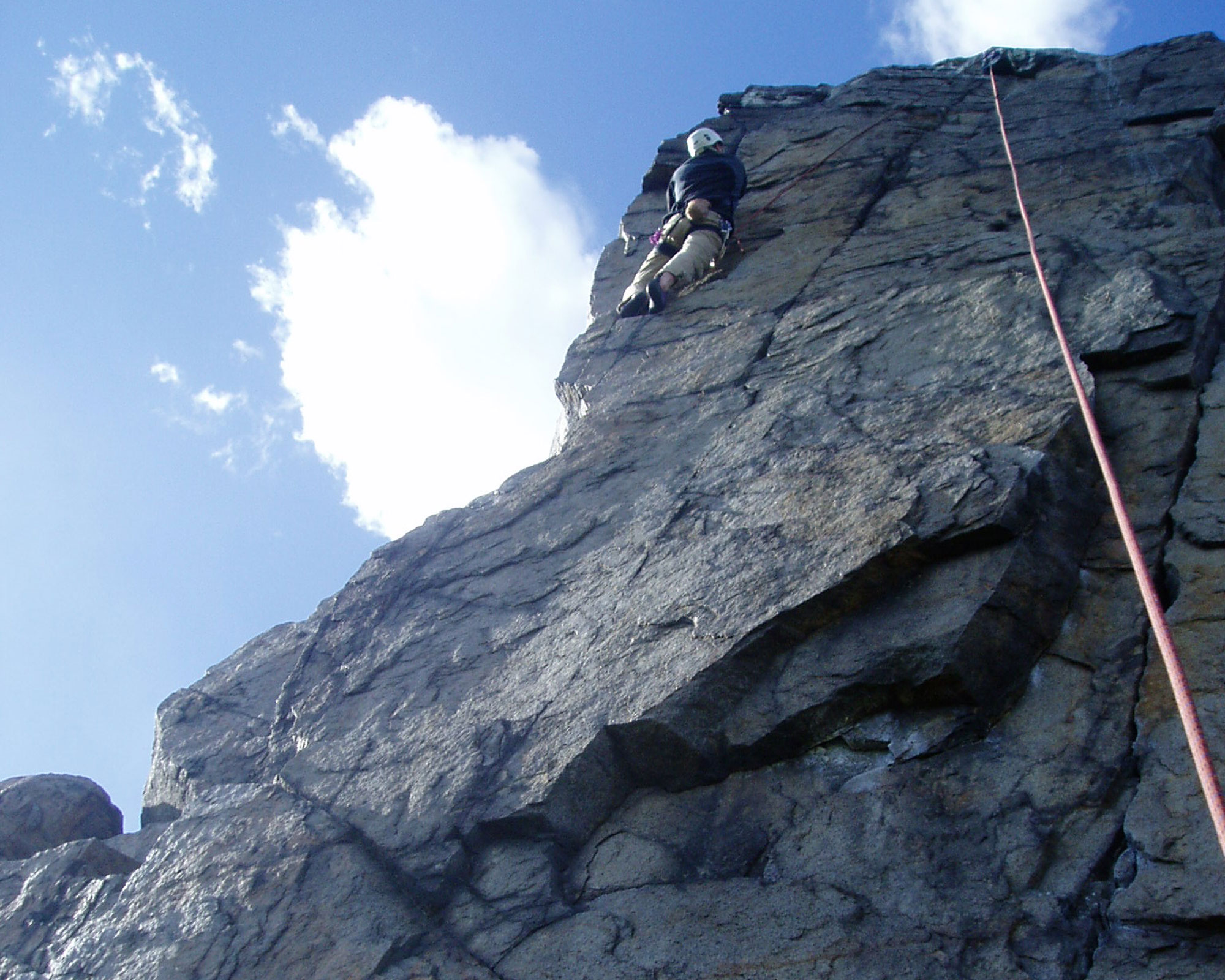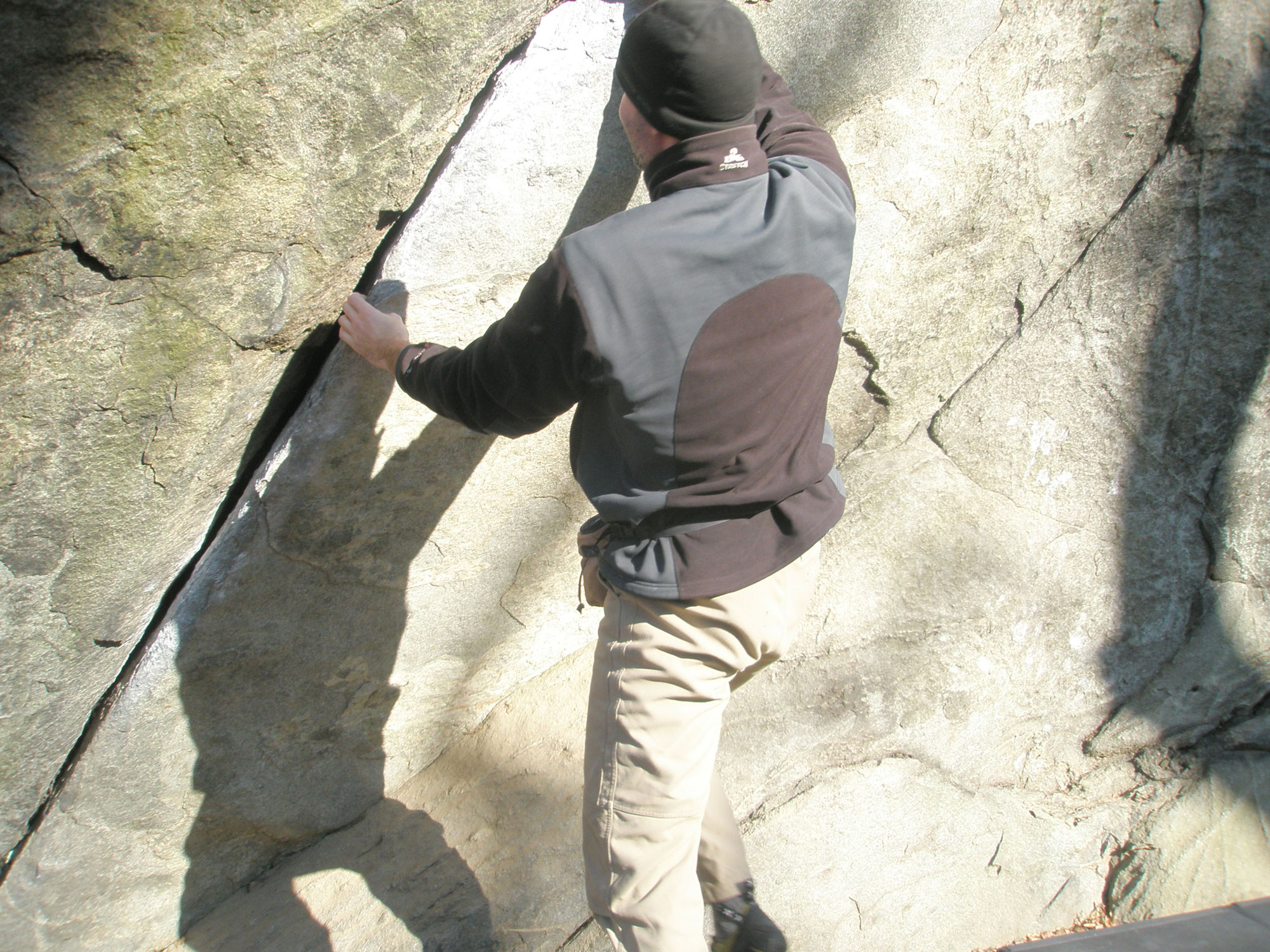When you think about vintage outdoor gear, it’s hard to come up with a more quintessential piece than the classic fleece jacket (men’s/women’s). For a time, it seemed like every New Englander sported a fleece (normally black) whether in the woods or on the streets—and of all the fleeces, The North Face Denali was king of the mountain. We all know the jacket—it was a staple of college campuses, office buildings, and trails everywhere. In EMS stores, demand for them would consistently leave the Denali in short supply by Thanksgiving. Luckily, by the early 2000s, if you missed out on your dream Denali, EMS had its own alternative: the Divergence Wind Pro Fleece.
Was the Divergence trying to steal some of the TNF fleece’s thunder? Maybe. However, for anyone planning to do more in it than walk from your dorm to class, it was an upgrade. And, unlike the Denali (which doesn’t carry the same fashion clout it once did), we’re still wearing the Divergence 20 years later.

Diverging from the Denali
The most notable attribute of the Denali—besides the iconic logo of Yosemite’s Half Dome that adorned its chest—was its “300-weight” fleece fabric. At this weight, the jacket provided excellent warmth and durability, along with being relatively lightweight, which made it well suited (historically, anyway) for use as either a mid-layer or as a standalone piece, and a favorite fabric for all types of outdoor activities. One downside of 300-weight fleece, however, was (is) its bulk. It doesn’t pack down well for carrying in a pack. Another significant negative is that it offers minimal protection from the wind, which, as anyone who has ever stood on a mountain summit or walked a New England city street will tell you, is an issue. Enter the Divergence.
When designing the Divergence, EMS addressed the Denali’s Achilles heel by forgoing the classic 300-weight fleece in favor of Polartec Wind Pro fleece, a fabric that featured a tighter knit—and, as the name implies, wind resistance. While the EMS Divergence seemed lighter in your hand than the Denali (you would presume when holding them that the Divergence offered less insulation) it often felt considerably warmer, especially when the wind was gusting. The tighter knit of the Divergence also meant more warmth in a more packable package—an asset to the early “light is right” crowd and those trying to keep pack size to a minimum. Plus the tighter knit made it more rugged. The Divergence also had a less-fuzzy finish than its competitors, which was useful for shedding light rain and mist.
The Divergence also featured stretch panels on its back and under the arms—a boon for everyone from climbers placing gear and reaching for holds above their heads to hikers scrambling up steeps and ascending ladders on trails found on lists like the Terrifying 25. As a bonus, these panels added a layer of breathability that was advanced for the era, especially compared to the early windproof fleeces that didn’t breathe at all.
 Fleece of the Past and Future
Fleece of the Past and Future
Fleece’s role as the premier outdoor fabric, and the prominence of jackets like the EMS Divergence, has receded in recent years, which led us not so long ago to wonder if fleece was dead. Filling fleece’s void has been left up to natural insulators like wool and down, as well as synthetic insulations like Primaloft, which have grown in popularity and provided improved performance compared to classic fleeces. Although fleeces such as the Divergence are no longer at their peak, they still play a role (albeit reduced) in our outdoor and everyday kits.
A testament to the long-lasting performance and relevance of the Divergence fleece (a roughly 20-year-old example) is that it’s still a favorite for excursions where weight and packability aren’t essential and comfort and coziness are a priority. For example, it’s hard to beat the EMS Divergence for fall cragging and bouldering sessions, along with trips to the coffee shop or brewpub. And there’s still something special about ditching technical layers after a day skiing and wrapping yourself up in a classic fleece.
Decades of Divergence
Now close to 20 years old, our Divergence is starting to look worn, of course. Although its appearance isn’t as sharp as it once was—a small stain on the front from a long-forgotten substance is a contributor to its less-than-stellar appearance—it still stands up to the elements.
On some recent windy and chilly climbing sessions at the Blue Hill Slab, Rattlesnake Rocks, and Quincy Quarries, the Divergence once again proved that it’s a superb outer layer. The Divergence reminded us of this recently one evening on the Blue Hill Slab—sliding it on over a tech tee and light long sleeve and under a climbing harness to fight off increasingly gusty conditions and dropping temperatures.
The Divergence’s tight weave continues to withstand the abrasiveness of the local granite and performs admirably on gritty chimney climbs like Double Chimney at Rattlesnake Rocks. During a recent Quincy Quarry session, its wind resistance and warmth were as good as new—fending off the unimpeded blasts of wind on top of K Wall—while breaking down an anchor late in the day. The zippers also continue to run smoothly, a blessing as the jacket gets pulled on and off as we chase the late fall sun from climb to climb.

Standing the Test of Time
Despite our love of the Divergence, it’s not perfect. By modern standards, the jacket is a little heavy and certainly bulky—especially when compared to a super-compressible down or synthetic puffy—something quickly noticed when shoving the Divergence in a pack at the end of the day at the Quarries. Conversely, the fabric isn’t as supple as present-day softshells.
That said, the biggest complaint we had with our Divergence during these recent climbing sessions is finding a small internal hole in the chest pocket—not bad for nearly two decades of use.
Tim Peck and Doug Martland
Tim and Doug met long ago at the Eastern Mountain Sports in Canton, Massachusetts. Bonding over a love of slick Quincy Quarry granite, White Mountain sufferfests, and scheming up adventures while folding tee-shirts, today Tim and Doug collaborate to write about their favorite outdoor activities and occasionally get nostalgic about tee-shirt tables.




